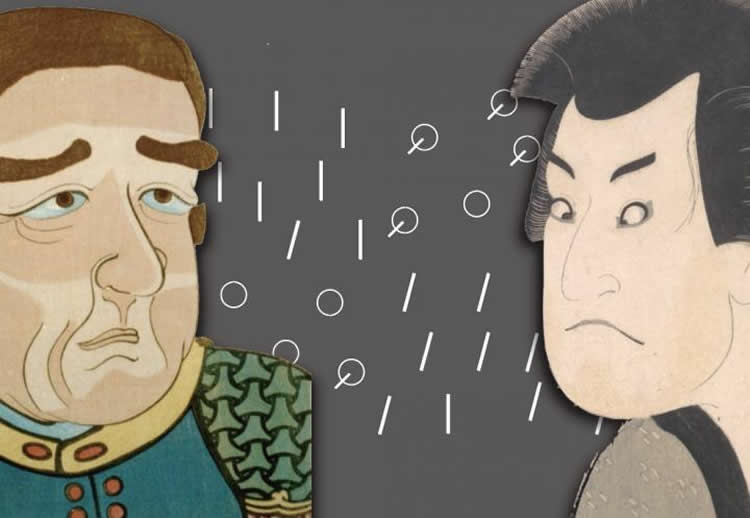Summary: A new study reveals the ability to perceive differences between similar images may depend on the cultural background of the person viewing.
Source: Kyoto University.
Perhaps we only see what we’ve learned to see.
In a recent multinational study in the journal Cognitive Science, a research team led by Kyoto University shows that an ability to perceive differences between similar images depends on the cultural background of the viewer.
Scientists have long recognized that the mental processes behind thinking and reasoning differ between people raised in Western and Eastern cultures. Those in the West tend to use ‘analytical’ processing — analyzing objects independently of context — while those in the East see situations and objects as a whole, which is known as ‘holistic’ processing.
While such differences in processing are thought to affect visual perception, lead author Yoshiyuki Ueda of Kyoto University believes that this view is overly simplistic.
“Reports about the effects of cultural differences on visual perception are inconsistent,” says Ueda. “Partly, previous experiments have used relatively complex objects, resulting in a lot of ‘noise’. We decided to simplify the visual task by using simple geometric figures.”
Volunteers from Canada, the United States, and Japan were asked to look at groups of objects such as straight lines with varying properties and discern simple differences between them: angle and length, for example. In looking for the one odd line out of a group, North Americans took more time when the line was shorter, rather than if it was longer. No such differences were seen in Japanese volunteers, who in contrast had a significantly harder time identifying a straight line among tilted ones.
Such a stimulus-dependent cultural difference cannot be explained simply by analytic-holistic theory.

“There are likely other differences in perceptional mechanisms that caused this discrepancy in visual processing,” continues senior researcher Jun Saiki of Kyoto University. “Our next step is to find the cause of this discrepancy. One such reason may be the orthographical systems the subjects see regularly.
“In East Asian writing, many characters are distinguished by subtle differences in stroke length, while in Western alphabets, slight angular alterations in letters result in remarkable changes in the reading of words.”
The researchers eventually hope to gain insight into the role of visual experience in the development — from an early age — of the visual processing system.
Funding: Natural Sciences Engineering and Research Council of Canada, Japan Society for the Promotion of Science funded this study.
Source: Raymond Kunikane Terhune – Kyoto University
Image Source: NeuroscienceNews.com image is credited to Kyoto Univesity.
Original Research: Abstract for “Cultural Differences in Visual Search for Geometric Figures” by Yoshiyuki Ueda, Lei Chen, Jonathon Kopecky, Emily S. Cramer, Ronald A. Rensink, David E. Meyer, Shinobu Kitayama, and Jun Saiki in Cognitive Science. Published online March 25 2017 doi:10.1111/cogs.12490
[cbtabs][cbtab title=”MLA”]Kyoto University “Do You See What I See? Visual Perception May Depend on Environment and Birthplace.” NeuroscienceNews. NeuroscienceNews, 23 May 2017.
<https://neurosciencenews.com/environment-visual-perception-6753/>.[/cbtab][cbtab title=”APA”]Kyoto University (2017, May 23). Do You See What I See? Visual Perception May Depend on Environment and Birthplace. NeuroscienceNew. Retrieved May 23, 2017 from https://neurosciencenews.com/environment-visual-perception-6753/[/cbtab][cbtab title=”Chicago”]Kyoto University “Do You See What I See? Visual Perception May Depend on Environment and Birthplace.” https://neurosciencenews.com/environment-visual-perception-6753/ (accessed May 23, 2017).[/cbtab][/cbtabs]
Abstract
Cultural Differences in Visual Search for Geometric Figures
While some studies suggest cultural differences in visual processing, others do not, possibly because the complexity of their tasks draws upon high-level factors that could obscure such effects. To control for this, we examined cultural differences in visual search for geometric figures, a relatively simple task for which the underlying mechanisms are reasonably well known. We replicated earlier results showing that North Americans had a reliable search asymmetry for line length: Search for long among short lines was faster than vice versa. In contrast, Japanese participants showed no asymmetry. This difference did not appear to be affected by stimulus density. Other kinds of stimuli resulted in other patterns of asymmetry differences, suggesting that these are not due to factors such as analytic/holistic processing but are based instead on the target-detection process. In particular, our results indicate that at least some cultural differences reflect different ways of processing early-level features, possibly in response to environmental factors.
“Cultural Differences in Visual Search for Geometric Figures” by Yoshiyuki Ueda, Lei Chen, Jonathon Kopecky, Emily S. Cramer, Ronald A. Rensink, David E. Meyer, Shinobu Kitayama, and Jun Saiki in Cognitive Science. Published online March 25 2017 doi:10.1111/cogs.12490






